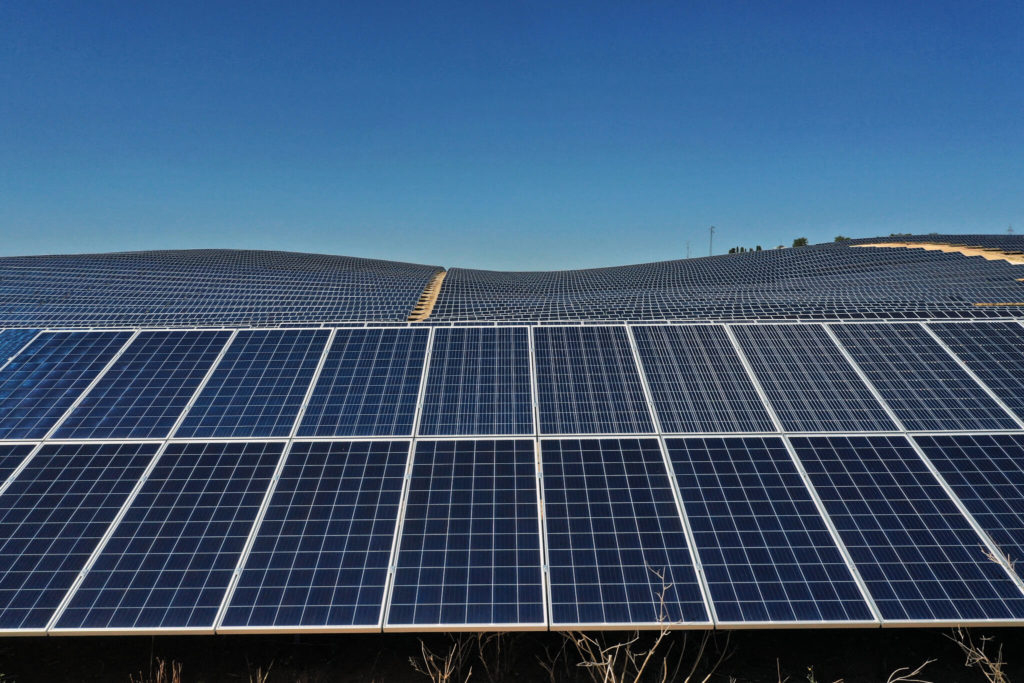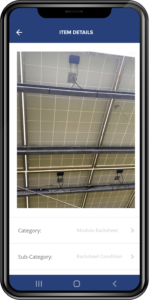Are you experiencing sudden performance losses in your solar array? Would you like to validate a warranty claim for mechanical or electrical faults? Are you looking for a way to identify the early signs of degradation in your modules? Are you looking for a way to monitor the quality and health of thousands of components? Module condition monitoring can validate the status of your array and support any potential warranty claims. This article explains how to identify and track degradation in your solar asset and how to substantiate this information.
What is module condition monitoring?
Module condition monitoring refers to assessing the condition of modules as opposed to the condition of the whole array. Its purpose is to determine the state of the modules through a variety of tests and inspections. These look at the quality, performance and efficiency of modules, as well as any potential faults and defects. Especially important are systemic faults and defects such as backsheet degradation or PID (Potential Induced Degradation), or any module batch related issues. Regular inspections and tests make it easier to take stock of the modules’ condition and identify visual symptoms. Discoloration, corroded bus bars or delaminating back sheets are often the first hallmarks of decay and might point to bigger issues.
The cost implications of faulty modules and having to turn the site off while they’re being replaced can be huge. Scheduling regular, repeatable and comparable tests and inspections makes your modules’ performance more predictable. They also help to identify the degradation rate and validate if it’s in line with the manufacturers’ specifications. And if an issue arises, they provide a viable data set for a successful warranty claim with the manufacturer.

Why are we talking about module condition monitoring now?
Worldwide, the number and scale of PV installations is rapidly increasing. And modules are one of the most numerically dense components on site apart from fasteners, screws and bolts. Because they represent a significant percentage of the project costs it’s vital to ensure a high module production capacity. But not all modules are created equal. Manufacturing and production errors as well as climatic and environmental conditions can contribute to their degradation and reduced performance. That’s why it’s important to have regular quality testing, beginning in the factory and throughout the modules’ operational life cycle.
Contracts for solar plants contain a performance warranty to ensure that the asset delivers a specific performance level. But these contracts only require a specific percentage of an array’s modules to be inspected within specific time frames. This means that O&M teams may only inspect specific sections of a site. It simply wouldn’t be cost effective to have a technician walking a 50 MW site every month, every year. As a result, it may take several years before the symptoms of an arising defect are identified. But in reality those symptoms were already present, they just went undiagnosed. Any defects may be spread across a massive geographic area and affect thousands of different components before they’re discovered. By that time, performance losses may have become very obvious.

When is module condition monitoring carried out?
Module condition monitoring begins with benchmarking the condition of the equipment coming off the manufacturing line. Further tests are carried out during the construction and after the array is energized.
During the first years of an installation’s life any unresolved items from the works completion punch list are fixed. This is also the point at which routine operational benchmarking should begin. Perhaps a few years after that initial stabilization period, the degradation rate isn’t in line with the warranty. If this is the case, routinely monitoring modules over time provides the historical data that helps substantiate a lack of contractual compliance.

How smart software supports this task
Digital tools enable all players involved to start creating live data that’s easily accessible and comparable. For instance, mobile apps allow site technicians to visually document and track evidence, and to upload inspection reports. Consequently, O&M teams can always return to these modules over a period of years and document them including their serial numbers. All the resulting data can be accumulated in one platform, providing a year-on-year or inspection-to-inspection comparison.
With better data it becomes much easier to identify early onsets of abnormalities that may just be arising. Building a digital thread of historical data helps to understand the module failure rate. Last but not least, having access to high-quality historical data can lead to more successful warranty claims in the future.
In a next blog post we will discuss more in detail how to best perform module condition monitoring. Stay tuned.
